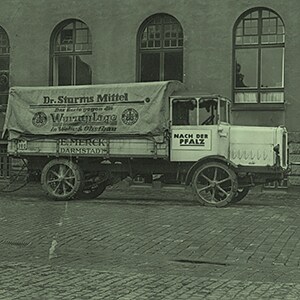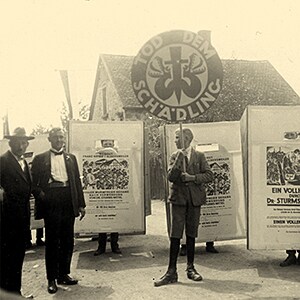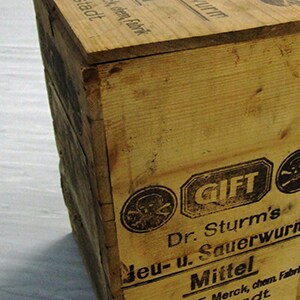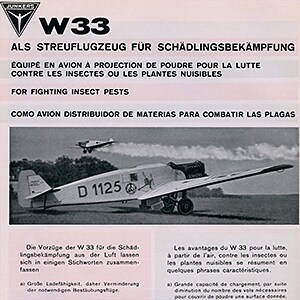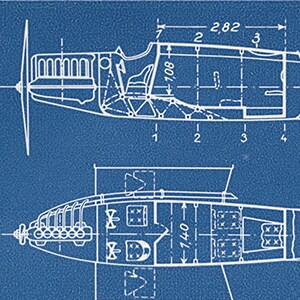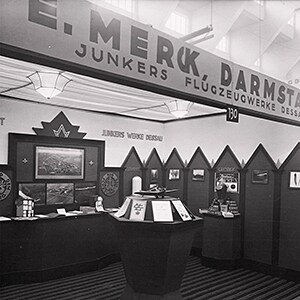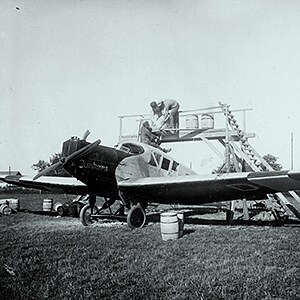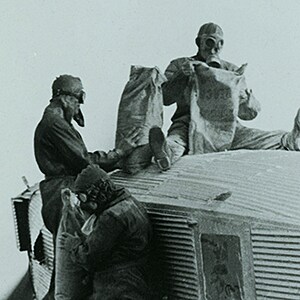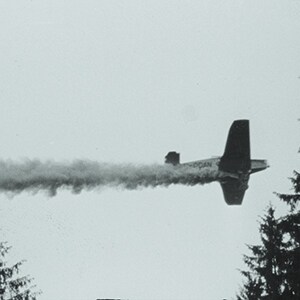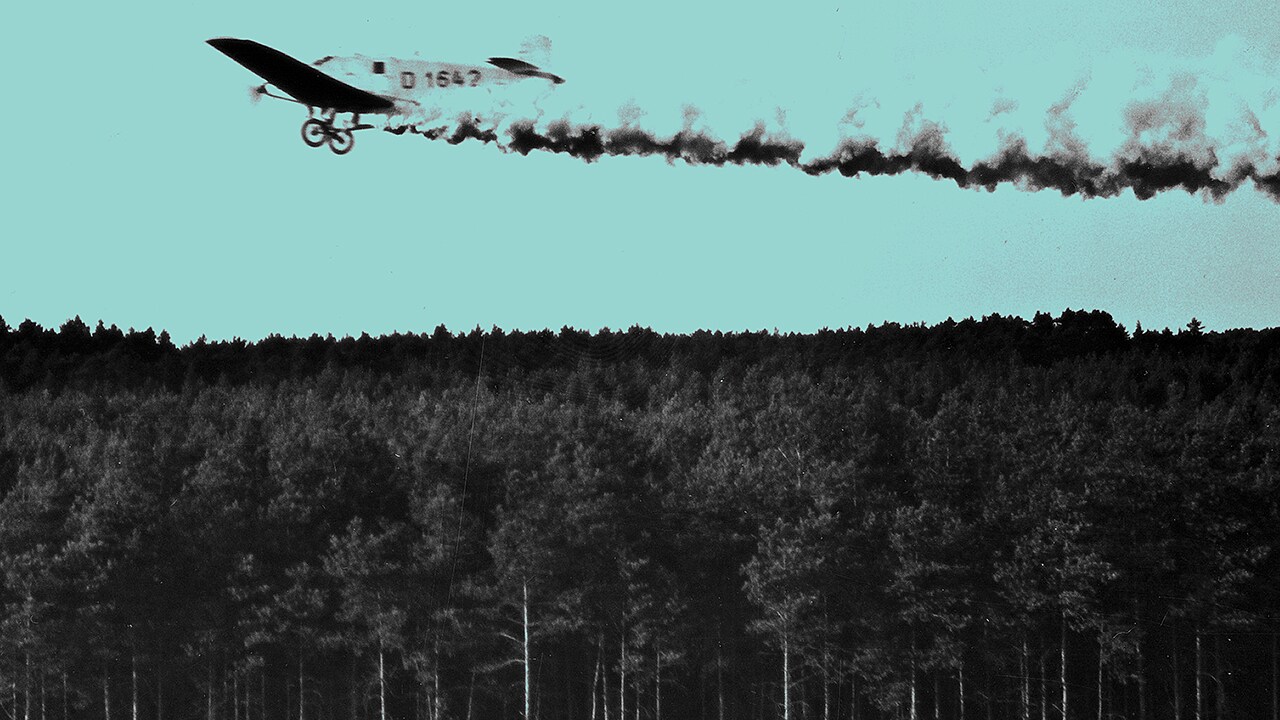
textblock default title
»I watched individual portions of Dr. Sturm’s spraying agent dispersing easily and rapidly through the aircraft’s vaporizing apparatus!«
Ernst Schubert, Control Laboratory, 1926
Agriculture and forestry suffer tremendously due to the rampant increase in crop pests in the 1920s. The increased incidence of pine beauty and owlet moths completely destroys 170,000 hectares of pine forest in Prussia alone. Foresters, farmers and vintners face losing their livelihood.
E. Merck, Darmstadt, Germany, sets up a »Crop Protection and Pest Control« Department. Compounds and methods need to be developed. The first product is »Dr. Sturm’s European Grapevine Moth Compound«, which is crucially important for the German winegrowing regions of the Palatinate. New insights are shared via brochures, posters, talks, demonstrations, and films under the heading »Death to the Pest«.
A patent filed in 1911 by Senior Prussian Forestry Commissioner Zimmermann on pest control by aircraft unleashes new opportunities. the company develops Esturmit and Forestit, very powerful fine powder compounds with special physical properties to make them suitable for delivery from the air. In 1924, the company teams up with the Junkers-Flugzeugwerk AG in Dessau. Junkers equips all-metal aircraft with spraying devices. A single aircraft has a load capacity of 550 kilograms of powder per flight, enough to spray about twelve hectares of forest.
From 1925 onward, spraying takes place on a regular basis. An on-site runway needs to be found first; active substance transport, aircraft loading, even air traffic coordination are all entrusted to the company and Junkers employees. For maximum safety, the area of forest is cordoned off by police during spraying, with white flags marking the sectors, and the most recent weather forecast is elicited by field telephone before takeoff. Each pilot may fly ten to twelve flights in the cool morning hours and anything up to six flights in the evening. Spraying is limited to these times of day for optimal response.
Then the operatives head out with the customers to check the results. The success of a crop spraying session is confirmed by counting the numbers of dead pests on the ground. Representatives of the forestry authorities travel on board as copilots, giving them an opportunity to take aerial photographs of their territory. The company delivers the supplies for 1,456 flights in Prussia, Bavaria and the Palatinate between 1924 and 1929 alone.
The project comes to an end in late 1936 by order of the Reichs ministries of forestry and aviation. The »unstructured and inconsistent control by private industry« becomes a sovereign task of the government with the establishment of a »Luftwaffe Pest Control Group«.
Farmers and vintners are so desperate that police protection is required for deliveries of grapevine moth compound in the most heavily infested regions. Otherwise the winegrowers would snatch the crates straight from the trucks and spread the contents on their vineyards.
Not even five minutes pass from loading the aircraft with powder until the next takeoff. After about ten minutes in the air, the plane needs to turn back for refueling. A single planeload is sufficient to spray ten to twelve hectares of forest properly.
From a 1924 Junkers W33 brochure: »A low-wing cantilever monoplane with a trapezoidal wings. A framework structure consisting of tubular spars, tubular struts and sheet metal struts. The wing is divided into a central section and end sections. The design as characterized makes the W33 ideal for use as a postal and cargo airplane, for aerial photography and mapping, and as a crop-duster plane for pest control.«

